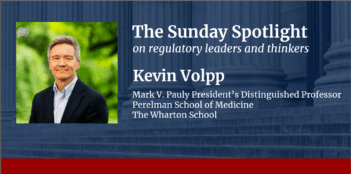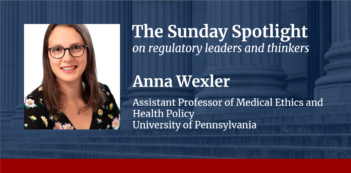
Amid rising insured rates, physician shortages, and COVID-19, nurse-led care seeks to address health inequities.
In Richmond, Virginia, a public health nurse leads a community clinic where refugees and immigrants can receive the COVID-19 vaccine. Meanwhile, in Perry County, Alabama, a nurse connects elderly, Black, and low-income communities to vaccine appointments.
Across the United States, nurses are among the frontline workers battling against the coronavirus pandemic. As the pandemic and vaccine distribution expose inequities in the U.S. health care system, nurse-led care may help break down existing barriers to health services for vulnerable populations.
Advanced practice registered nurses lead nurse-managed clinics, which offer primary care and wellness services through partnerships with federally qualified health centers, academic institutions, nonprofits, and social services agencies. These clinics address the social determinants of health by increasing access to care and improving patient satisfaction, health outcomes, and behaviors that affect health. Hailed as “the future of primary care in the United States” by some health policy experts, nurse-led clinics support medically underserved populations, particularly in areas with a shortage of primary care physicians.
Nurse practitioners offer the same—and, on some metrics, better—quality of care than primary care physicians, while also providing cost savings to the U.S. health system.
For routine wellness visits, Medicare—the federal health insurance program for elderly U.S. residents and certain younger people—reimburses nurse practitioners at 85 percent the rate of doctors. Primary care from nurse practitioners is also less expensive for private insurers and patients who pay out-of-pocket. In addition to lower payments, nurse-managed care may decrease expensive emergency room visits by focusing on preventive services.
Nurse-led clinics were federally recognized as a health care delivery model following the passage of the Affordable Care Act (ACA). Although the ACA increased the number of Americans with health insurance, the supply of primary care physicians has remained insufficient to match the needs of the insured population.
To address this shortcoming, the ACA established a $50 million grant program to expand the financial capacity of safety net providers, such as nurse-led clinics. The federal government distributes funding under this program based on a number of factors, including the financial need of the safety net provider and other available funding at a state, local, and organizational level.
To qualify for funding, nurse-led clinics must meet certain regulatory requirements.
First, nurses must serve as the primary providers at such clinics where at least one advanced practice registered nurse works in a management capacity. Second, the nurse-led clinic must offer a full range of primary care and wellness services to all patients, regardless of their socioeconomic or insurance status. Finally, nurse-led clinics must create community advisory committees composed of patients to oversee the impact of the clinic and seek civic input.
Although some health policy experts have praised the ACA’s funding for nurse-managed clinics as “the beginning of a new era for nurse-led health care,” variability across state regulations in nurse practitioner practice authority creates barriers to expanding these clinics.
Specifically, states differ in the amount of authority they grant nurse-led clinics to practice without physician oversight. Many states require nurses to enter into collaborative practice agreements with physicians before they can practice independently. To gain full practice authority, some states require nurse practitioners to complete several thousand hours or, in some cases, years of training under the supervision of a physician. Other states extend physician oversight into operations of nurse-led clinics.
For example, in addition to mandating 4,000 hours of supervised practice, Alabama requires supervising physicians to visit nurse-led sites at least twice per year. For nurse practitioners who have yet to complete their mandatory supervised practice, a physician must oversee a minimum of 10 percent of their work at the clinic.
Some medical experts argue that collaborative practice regulations are necessary to protect patient safety and quality of care. Other health experts, however, explain that—compounded with a growing insured and aging population—these regulations hinder health care for the 81 million Americans who lack access to a primary care physician. To keep up with these demands in Alabama, for example, the state would need to increase its number of primary care physicians by 23 percent over the next nine years.
In response to these mounting pressures for access to additional medical professionals, some states have changed their laws to grant nurse practitioners full practice authority.
Following 22 other states’ existing laws, California recently passed legislation that permits nurse practitioners to practice independently starting in 2023. Currently, nurse practitioners in California are required to work under the direction of a physician, and to collaborate with the physician and the larger health system in which they operate to establish treatment and care practices.
This new state legislation does not completely abandon this partnership, but it does afford nurse practitioners more freedom.
Under the new law, nurse practitioners must complete a three-year, supervised “transition to practice” period before they are eligible to operate clinics independently, similar to a regulatory model used in states such as Connecticut, Delaware, and Nebraska. Although the legislation permits nurse practitioners to offer primary care and some diagnostic services, they must refer patients to physicians when medical needs exceed the scope of their practice capacity.
This new legislation has sparked debate in the medical community.
Proponents of physician-based care argue that easing supervision could compromise patient health. To resolve physician shortages, the state should instead focus on increasing training and education of providers, suggests the California Medical Association.
Advocates of full practice authority welcome the legislation as an opportunity to expand care to needy patients while promoting the development of new health care delivery models, such as nurse-managed clinics.
As the shortage of medical workers has worsened during the coronavirus pandemic, other states—most recently, Massachusetts—have granted full practice authority to nurse practitioners as part of larger health care reform efforts.
States will likely continue to update their health care laws to address the systemic inequalities that have intensified amid the pandemic. With heightened awareness of the social determinants of health, disparities in access to care, and rising health care costs, nurse-led care appears to serve as one solution to the existing challenges faced by patients across the United States.



